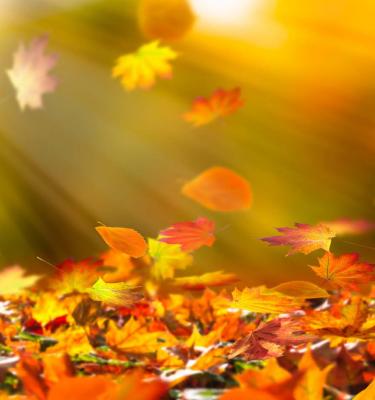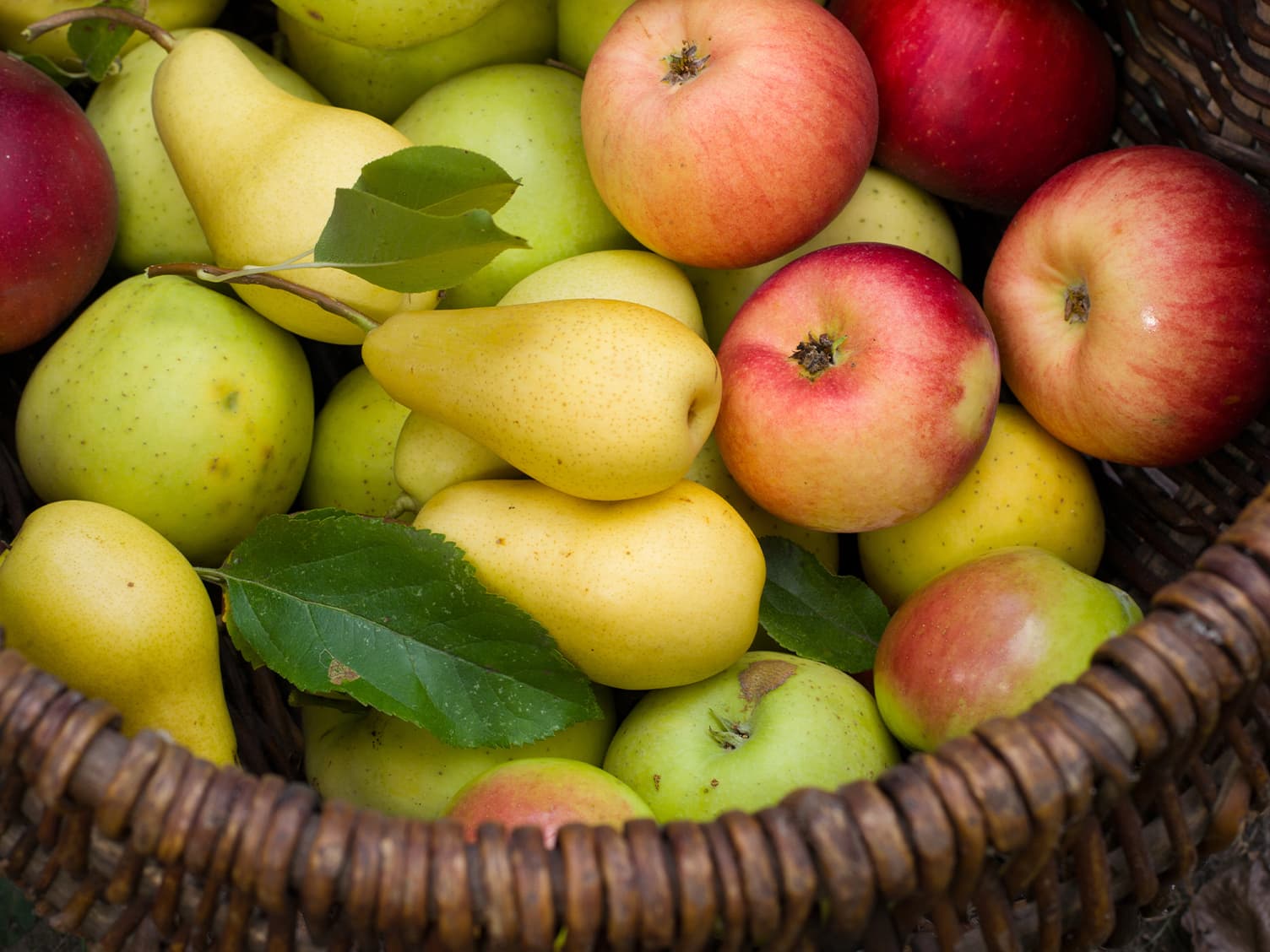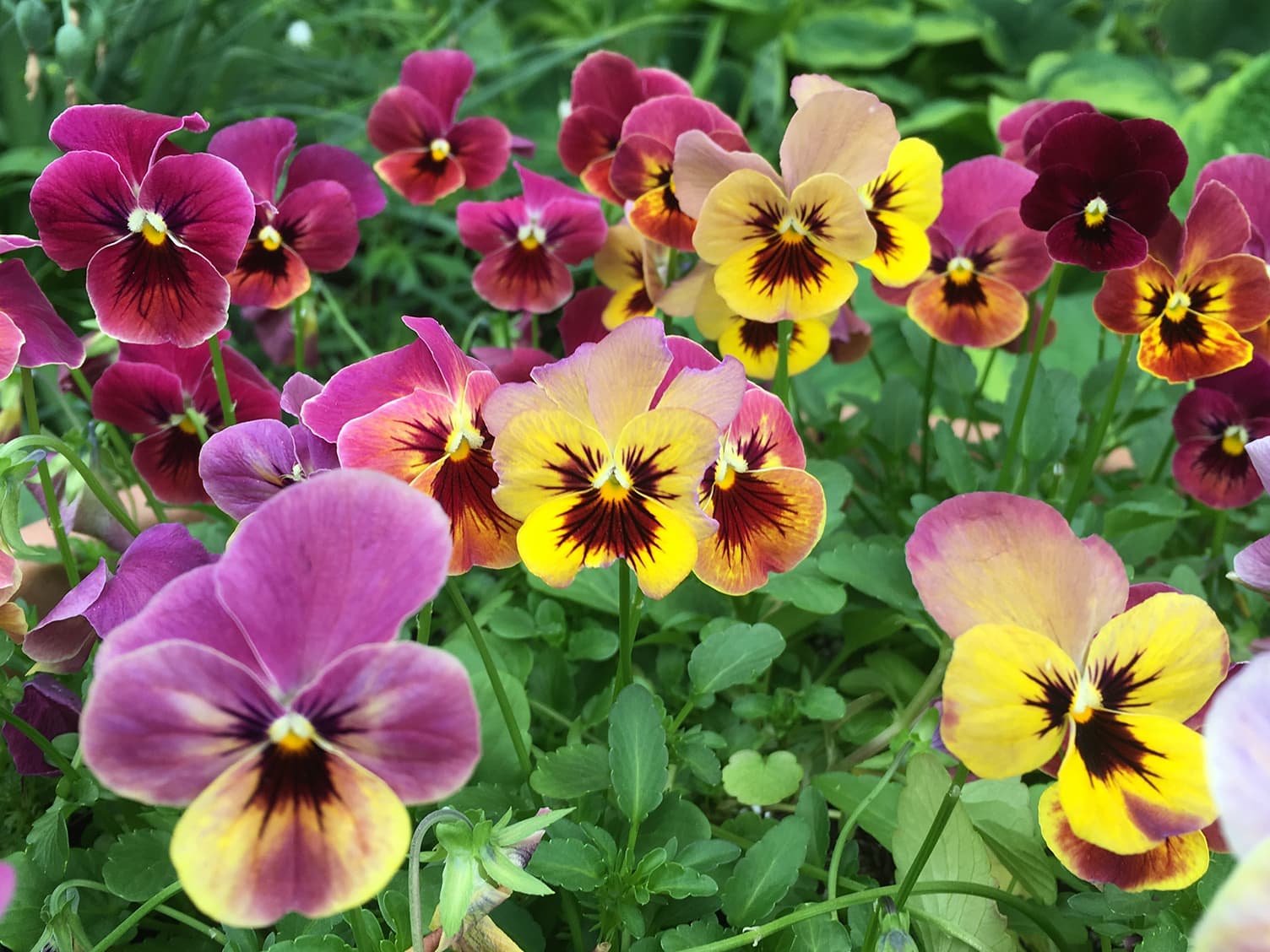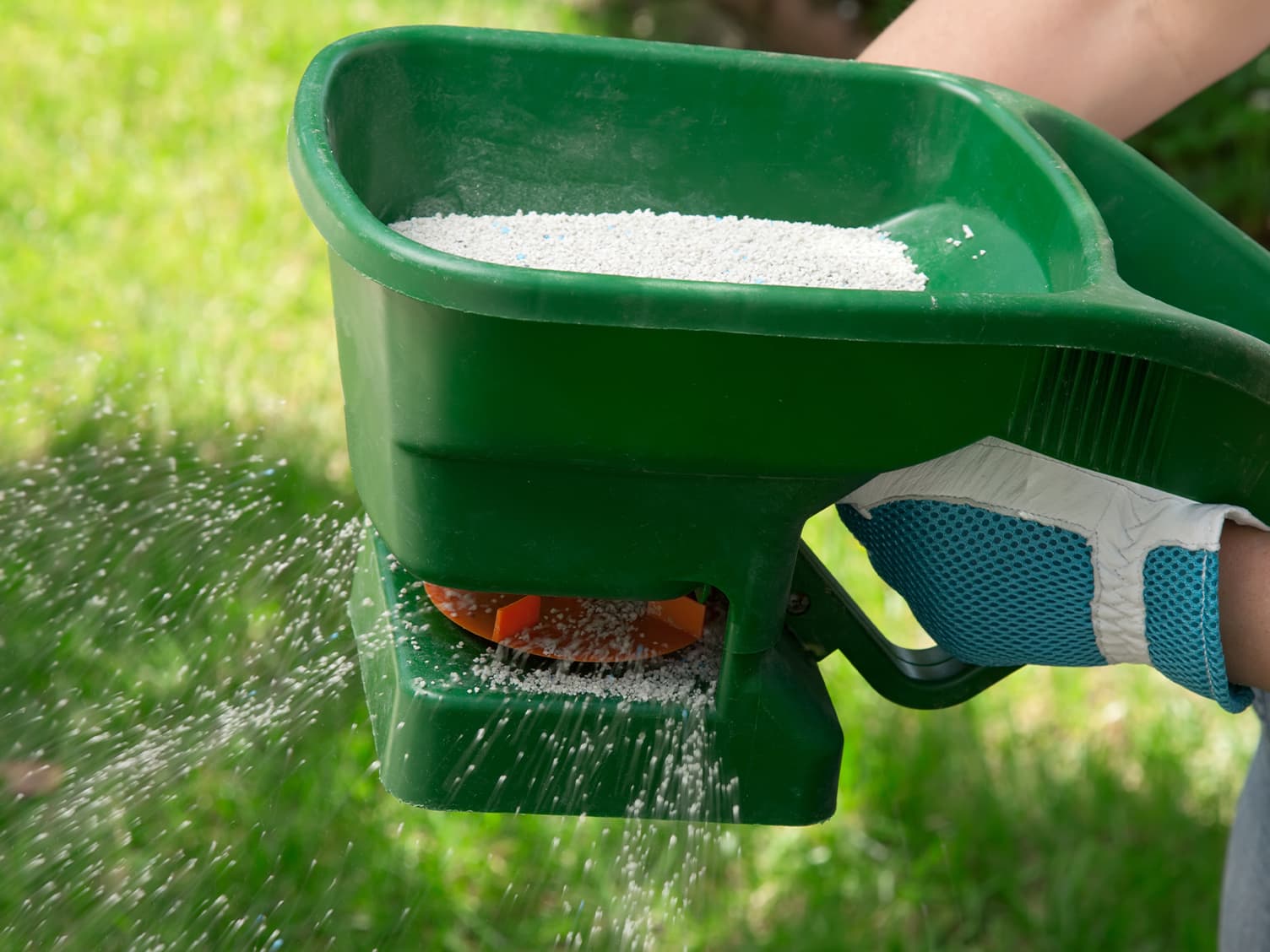Chilli
It seems that most people now have at least 1 or 2 chilli plants at home – it’s become incredibly trendy. Growing...

This month sees the beginning of the “season of mellow fruitfulness” when the bounty of summer’s flowers, fruits, and veggies is almost finished, the sun is losing its intensity, it’s less humid in the northern states and days are gradually shortening. There’s an overall feeling in the air that we’ve managed to survive the challenges of another summer.
Summer’s seasonal flowers and vegies and the last of the fruit crops are coming to an end with the onset of cooler days and crisper nights. It’s a great time to make jams, sauces, relishes and preserves with the abundance of produce available, to tide you over the less productive months ahead..
As flowers and vegies fade, pull the plants out, dig over the soil, add compost and fertiliser and start preparing to plant Winter and Spring flowers, bulbs and edibles.
It seems that most people now have at least 1 or 2 chilli plants at home – it’s become incredibly trendy. Growing...
Potatoes (Solanum tuberosum) are tubers that grow and form at the plant’s roots. Plants also produce flowering shoots...
Delicious in salads and sandwiches, the crisp, sweet crunch of a cucumber is one of the joys of summer. Growing...
Spring onions (also known as green shallots and green bunching or salad onions) are a delicious addition to a whole...
Nothing beats the taste of your own home-grown tomatoes, freshly picked and warm from the summer sun. Slice them into a...
The basis of so many delicious dishes, onions (Allium cepa) are an essential ingredient in every cook’s store cupboard...
Growing garlic ( Allium sativum) at home is now very popular. It's an easy vegetable to grow - just plant a garlic clove...
Zucchini are now a common, summer staple in the vegetable garden. They are relatively easy to grow and they can be eaten...
Runner beans, or more correctly scarlet runner beans, (Phaseolus coccineus) are among the easiest and most rewarding...
Delicious in pies, soups and stews and full of vitamins and minerals, pumpkins are a tasty autumn and winter treat...
Drizzled with olive oil and baked whole or sliced into steaks, cut into individual florets and wok-tossed in a stir fry...
Rhubarbs edible stalks grow from a central crown and this popular vegetable is most commonly eaten as a sweet! Once...
You might not like the cold weather, but Brussels sprouts do! Brussels sprouts grow best in cool climates with cold...
Spinach is rich in iron, fibre and other essential vitamins and this easy to grow veg is ready to harvest, leaf by leaf...
Kale is an easy to grow leafy vegetable that has become popular thanks to its superfood status because it’s rich in...
Cabbages are an easy and versatile vegetable for you to grow and enjoy at home! It can be eaten raw, cooked into...
Silverbeet is also commonly referred to as Swiss chard, chard or rainbow chard. The rainbow variety has brightly...
Ginger is a tasty and easy spice to grow in your own garden. Tropical and subtropical gardeners can grow ginger year...
Avocado trees, once established, are very productive, beautiful evergreen trees that will supply you with plenty of...
Beetroot is the ultimate vegetable to grow for root-to-tip eating! Its young tender leaves can be eaten raw in salads or...
Celery can be a fussy vegetable to grow, it doesn’t like it too hot or too cold! But once you’ve got it growing happily...
Watercress is a peppery, nutrient-rich leafy green that’s delicious on sandwiches and in salads. It’s easy to grow in...
Eggplants are a heat-loving, productive and home garden-friendly crop to grow. They love a full sun spot and will...
Capsicums add crunch, colour and nutrients to many dishes including salads, casseroles, stir fries and roasts. Capsicums...
Radishes are one of the easiest and speediest vegetable crops to grow! Perfect for the time poor or beginner gardener...
Leeks are a sweet and mild member of the onion family. They thrive in cold and warm temperate climates but can be...
Globe artichoke (Cynara scolymus) are thistle like plants that produce edible flowers - harvested and eaten in their bud...
Fennel or Florence Fennel (Foeniculum vulgare dulce) produces crisp white bulbs, topped with fern like fronds - all...
Horseradish is a vigorous plant related to broccoli, cabbage and kale - but unlike its brassica cousins, horseradish is...
Squash or patty pan squash as they are often called - because of their UFO like shape - are an easy to grow summer...
Parsnips are a nutty and sweet root vegetable that can take 5-6 months to reach maturity! But the flavour of homegrown...
Shallots ( Allium cepa var. aggregatum) are a member of the onion family loved by chefs and home cooks for their mild...
Lettuce is an easy to grow, staple leafy green that can be easily grown year round. You can grow lettuce quickly from...
Carrots are an easy to grow, staple vegetable that’s worth including in your garden. They’ll happily grow in a full sun...
Snow peas are heavy croppers that are easy to grow in home veggie beds or potted gardens. Snow peas flat pods can be...
Turnip are a fast and easy to grow root crop that’s related to other broccoli, cabbage and other brassicas. Although...
Yam (Dioscorea sp.) is an ancient food crop grown in tropical and subtropical climates as an alternative to potatoes...
Mustard greens (Brassica juncea) are a cool season vegetable, grown for their peppery edible leaves. You can eat young...
Tiny and tasty, cherry tomatoes are a vegie patch superstar. Surprisingly east to grow, these little legends come in a...
Eaten fresh, baked in muffins or as the star attraction in jams or desserts, blueberries (Vaccinium corymbosum) are...
Who doesn’t love strawberries? If you’re a strawberry fan, there are many varieties easy to grow at home, allowing you...
What could be better than a bowl of sweet, fresh-picked raspberries in summer? These delicious fruits are easy to grow...
Apple trees love a garden with cool winters, but if you choose the right variety (with ‘low chill’ requirements), you...
Chokos are an old-fashioned crop that’s making a comeback! Once upon a time, these vigorous vines covered pergolas...
Blackberries sometimes get a bad wrap thanks to the wild, thorny, weedy ones! But growing blackberries in your garden is...
Dragon fruit grows on a climbing cactus that produces stunning white flowers in summer. These flowers develop into pink...
Growing grapes from your own grapevine really are the perfect summer snack! Fruiting grapevines are fast-growing...
Passionfruits are a popular and productive vine that will grow in most climates around Australia. They particularly...
Rockmelons, also known as cantaloupe, grow on sprawling vines during the warmest months of the year. These sun-loving...
Lychee fruit grow on medium to large evergreen trees that love growing in subtropical and tropical climates. They love a...
Paw Paw or Papaya (Carica papaya) originate from tropical and subtropical climates, so they thrive in warm, frost free...
Watermelons grow on sprawling vines during the warmest months of the year in Australia. These sun-loving plants can be...
Pear trees love a garden with cool winters, but if you choose the right variety (with ‘low chill’ requirements) you can...
Kiwifruit grow on large, vigorous vines that need a lot of space to grow. To produce kiwifruit you’ll need to plant both...
Gooseberries (Ribes uva-crispa) are native to parts of Europe, but they’ll happily grow in the cooler parts of southern...
Plum trees are productive fruit trees, ideally suited to growing in the average backyard or in a large pot. There are...
Pomegranates (Punica granatum) are heat-loving trees, native to the Middle East, that grow well here in Australia. The...
Bromeliads ( Bromeliaceae) are a diverse group of plants with a very tropical vibe. With over 3000 different species in...
Almonds (Prunus amygdalus) are the edible nuts produced inside the hard-fleshed velvety fruit, that grows on a tree that...
Bougainvilleas put on a showy display of vibrant colour throughout summer. These vigorous vines are drought tolerant and...
Magnolia's magnificent blooms arrive at the end of winter, announcing that spring isn’t far away. On deciduous magnolias...
Bird of Paradise plants are tropical beauties with big leaves and flamboyant, colourful flowers that resemble birds...
Dieffenbachia (Dieffenbachia spp.), also known as Dumb Cane or Leopard Lily, are fast-growing tropical plants popular as...
Boston Ferns (Nephrolepis exaltata) are elegant plants with long, slender leaves that cascade over the sides of their...
Kentia Palms (Howea forsteriana) are tall, elegant palms with arching fronds on long stems that will happily grow as a...
Lilly Pilly plants range from small shrubs to large trees - you can grow them in the ground or pots and you’ll find a...
Bottlebrush gets their common name because their fluffy, blooms are shaped like old-fashioned bottle brushes...
Waratah (Telopea species) are Australian native plants loved for their large flowers that come in a range of colours...
Lemon trees are a classic backyard staple! These productive trees are long-lived and will grow in a large pot or in your...
Christmas Bush (Ceratopetlum gummiferum) or NSW Christmas Bush as it’s sometimes called is an Australian native plant...
English Ivy (Hedera helix) is a fast growing, creeping vine that is a serious environmental weed in many parts of...
Microgreens are the young and immature seedlings of plants with edible leaves that you can harvest and use for garnish...
A popular stalwart in Australian gardens for good reason, buffalo grass makes for an incredibly resilient lawn. It is...
Kikuya grass, or Pennisetum Clandestinum, is a vigorous plant often used in Australian lawns and common in public...
Sowing seeds or planting out seedlings of Winter veggies can begin from mid-month. Your crops will get a good start before colder weather slows down growth.
As Summer fades into memory, many vegetables will still have the last of their crops ready for picking.
Most of the summer fruits like apricots, peaches, plums and nectarines will have finished by now but there should still be good crops of mid to late season fruits maturing. These include:

Evergreen fruiting plants may be put into the garden now while the soil is still warm – passionfruit vines and citrus among them. Deciduous fruit trees in pots should be left until they are dormant and have lost all their leaves before being transplanted into the garden. Together with new bare-root fruit trees, they are best planted in mid to late Winter. Here's the list of fruit and citrus to consider:

Summer can be harsh on lawns, especially during drought and heatwave conditions. This month is a great time to repair the damages caused by the ravages of the season just passed.
